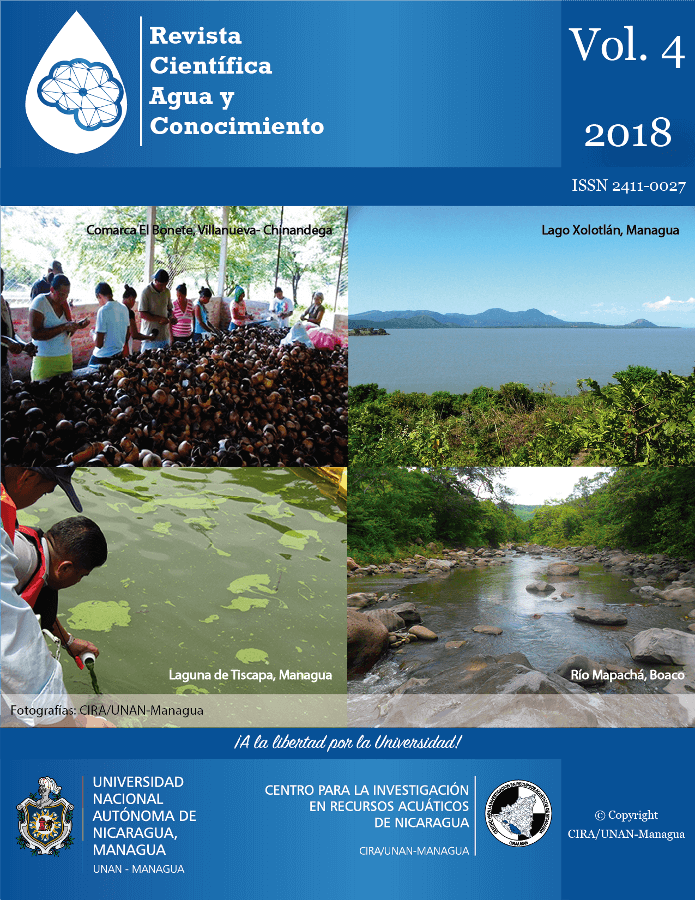Fluctuaciones temporales en el fitoplancton y contenido de microcistinas intra-celulares en cuatro lagos Nicaragüenses
Abstract
Chlorophyll a ranged between a value not detected in Lake Xolotlán (November) and 37 μg / l detected in Tiscapa (August). The most representative phytoplankton genera detected during most of the period sampled in three of the four Nicaraguan lakes studied (Cocibolca, Tiscapa and Masaya) were cyanobacteria, among which are distinguished Anabaenopsis, Merismopedia, Chroococcus and Lyngbya. Lake Xolotlán showed dominance of diatoms taxa (Stephanodiscus sp, Synedra sp, and Cyclotella meneghiniana). The results of microcystins show low values (<0.003 to 0.069 μg / l) in the four lakes studied, being the lakes Xolotlán and Masaya those that presented the highest concentrations in the months of May and July, respectively. When comparing these results with those reported for world lacustrine ecosystems for the same period, a low toxic potential can be inferred by microcystins in the four Nicaraguan lakes. However, the toxicity due to other natural toxins can not be ruled out given the dominance of cyanobacterial genera, so it is recommended to continue carrying out monitoring of this type and include in the peak-cyanobacteria count.


